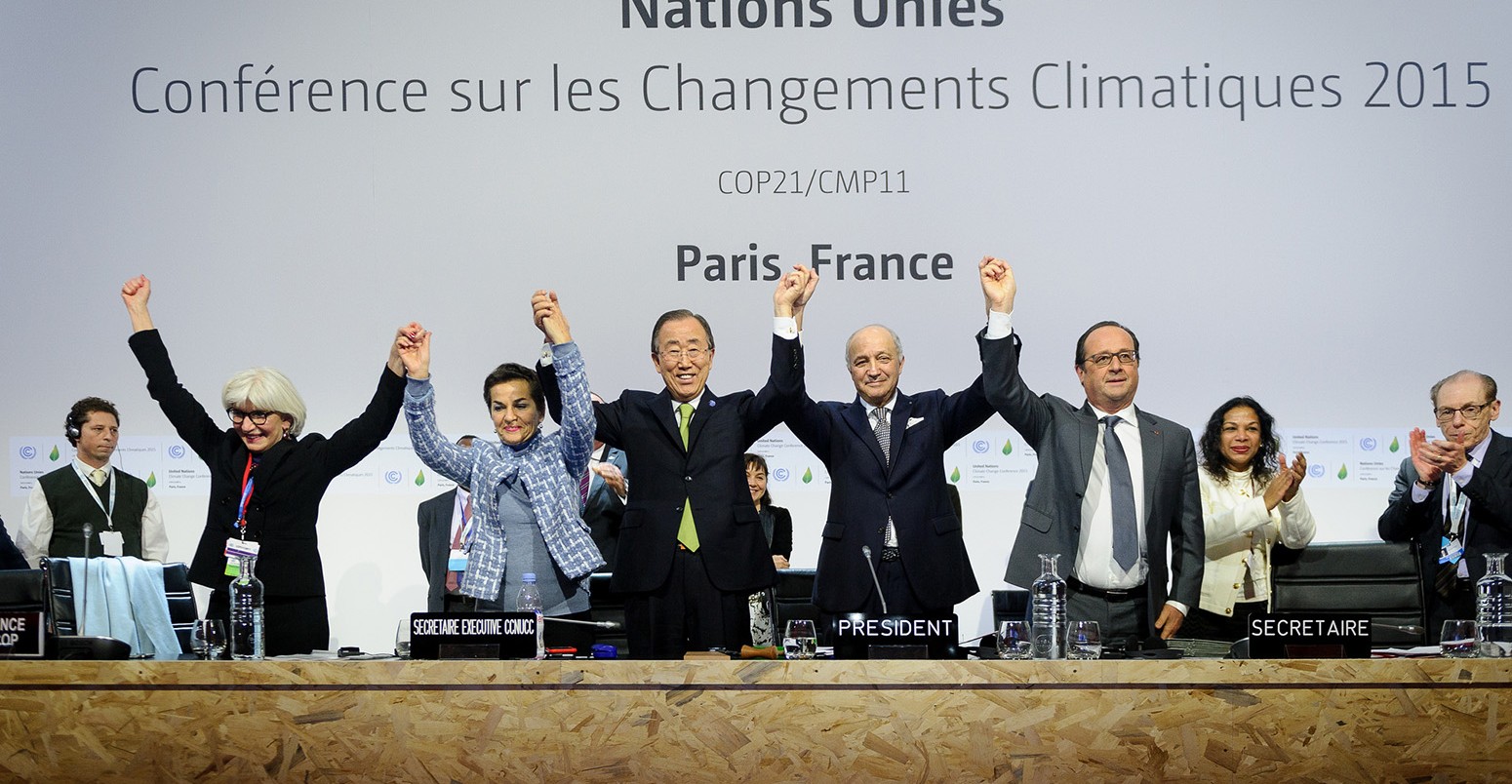Can the world keep moving forward?
The future of climate action hangs in the balance
Reading time: 5 min
🖊️ Francesca Suriano
Apr 2025
With Trump’s return to the White House, U.S. climate policy is set for a dramatic shift. From withdrawing from the Paris Agreement to reviving fossil fuels, his administration’s moves could reshape global climate action—just as the world nears critical tipping points.
Figure 1: Donald J. Trump at a rally in support of the coal industry. His policies have prioritized fossil fuel expansion while rolling back environmental regulations.
Donald Trump’s re-election as President of the United States has sent shockwaves across the international stage, particularly in the fight against climate change. A vocal skeptic of global warming, Trump has already moved to reshape U.S. environmental commitments. Within hours of taking office, he signed an executive order withdrawing the United States from the Paris Agreement, a move that threatens to unravel years of international progress on climate governance.

Figure 2: World leaders celebrate the signing of the Paris Agreement in 2015, a landmark climate accord now at risk following the United States’ withdrawal.
The Paris Agreement under threat
Signed in 2015, the Paris Agreement remains the world’s most significant climate accord, aiming to limit global temperature rise to well below 2°C, with an ambition to cap it at 1.5°C. The United States, historically one of the largest carbon emitters, has played a crucial role in shaping climate policy.
During his first term, Trump announced a withdrawal from the agreement, arguing that it disadvantaged the U.S. economy. However, procedural constraints meant that the formal exit only took effect in late 2020. Upon taking office, President Biden reversed the decision, reinstating the country’s commitment to international climate action. This time, however, Trump can execute a full withdrawal within a year, securing a three-year window to advance his policy agenda without oversight from the United Nations.
Despite this, climate experts remain cautiously optimistic. Laurence Tubiana, CEO of the European Climate Foundation and one of the architects of the Paris Agreement, has emphasized the resilience of the accord. “The Paris Agreement is stronger than the policies of any single nation,” she said, underscoring the global momentum toward clean energy transitions.

Figure 3: A world divided on climate action. A map showing global participation in the Paris Agreement as of January 2025, following the United States’ second withdrawal under President Trump.
What if the U.S. withdraws from the UN Climate Framework?
Trump’s second presidency may also bring a more drastic shift: withdrawing from the United Nations Framework Convention on Climate Change (UNFCCC), the foundational treaty that underpins all global climate negotiations. Established in 1992, the UNFCCC provides the legal framework for international climate action, including the Kyoto Protocol and the Paris Agreement.
Some of Trump’s allies argue that the U.S. should cut all ties with international climate initiatives, seeing them as an economic burden. However, legal scholars warn that withdrawing from the UNFCCC would not only isolate the United States diplomatically but also deal a significant blow to multilateral cooperation on climate policy. The U.S. Senate ratified the convention almost unanimously in 1992, and any attempt to abandon it would mark an unprecedented retreat from global environmental leadership.
A climate domino effect
The consequences of U.S. disengagement from climate policy could extend far beyond its borders. As the world’s second-largest economy and a major emitter, the United States has historically set the pace for international climate negotiations. Its absence from the table could embolden other nations to scale back their own commitments.
One immediate concern is the impact on climate finance, particularly for developing nations that rely on international funding to mitigate and adapt to climate change. Trump has already revoked the U.S. International Climate Finance Plan, an initiative launched under Biden to support vulnerable countries in the transition to clean energy. Without U.S. contributions, global climate funding could stagnate, exacerbating disparities between wealthy and low-income nations.
Market dynamics could also be affected. The International Energy Agency (IEA) reported that in 2024, global investments in clean energy outpaced fossil fuel investments by a 2:1 ratio. If the U.S. shifts its focus back to fossil fuels, investors may redirect capital toward more climate-progressive regions, potentially accelerating the global transition despite Washington’s policy shift.
The comeback of fossil fuels
Trump has made his energy priorities clear: reviving the fossil fuel industry while dismantling environmental regulations. His “Drill, baby, drill” approach includes expanding oil, gas, and coal production while rolling back Biden-era clean energy initiatives.
His first administration saw the repeal of over 100 environmental regulations, with significant consequences for emissions and environmental protections. Among these, the Clean Power Plan (CPP)—which aimed to cut carbon emissions from power plants—was replaced with a weaker alternative, significantly reducing federal oversight on polluters. Vehicle emissions standards were also loosened under the Safer Affordable Fuel-Efficient (SAFE) Vehicles Rule, lowering the required efficiency improvements for cars and trucks. Protections under the Clean Water Act were weakened, with a redefinition of federal jurisdiction that excluded certain wetlands and smaller waterways from regulation. Meanwhile, national monuments such as Bears Ears and Grand Staircase-Escalante saw their protected status reduced, opening vast areas to potential resource extraction.
Trump has also vowed to repeal the Inflation Reduction Act (IRA), Biden’s landmark $1 trillion climate investment package. However, doing so may prove politically challenging. Many clean energy projects benefiting from IRA incentives are based in Republican-led states, making a full repeal unlikely. Analysts suggest Trump may instead target specific provisions, particularly tax credits for electric vehicles and renewable energy infrastructure.

Figure 4: Projected U.S. greenhouse gas emissions under different policy scenarios. A second Trump term could add 4 billion metric tons of CO₂ emissions by 2030, reversing recent progress in emission reductions
The next decade will define the climate battle
Climate scientists warn that the 2020s are a decisive decade for action. According to an analysis by Carbon Brief, a second Trump term could result in an additional 4 billion tons of CO₂ emissions by 2030—effectively doubling the global emissions reductions achieved in the past five years through renewable energy expansion. The economic cost of these emissions could exceed $900 billion, according to U.S. Environmental Protection Agency estimates.
With current climate policies, global energy investments between 2023 and 2050 are expected to total $7.7 trillion. Trump’s rollback of clean energy initiatives could shrink this figure by $1 trillion, potentially slowing progress on decarbonization.
Yet, despite federal policy shifts, state governments, corporations, and local initiatives may continue to drive progress. Many U.S. states have enacted their own ambitious climate targets, and private sector investment in clean technology has reached record levels. Gina McCarthy, former White House climate advisor, has stressed that “the clean energy transition is unstoppable.”
The planet cannot wait
Trump’s return to the White House poses a significant challenge to global climate action, but it does not signal its collapse. The shift to a low-carbon economy is no longer just an environmental goal – it is an economic and geopolitical imperative. Yet, every delay brings the world closer to irreversible tipping points: intensifying natural disasters, rising sea levels, and widespread disruption to ecosystems and communities. The cost of inaction will be measured not only in economic losses but in lives affected by extreme heat, water shortages, and forced migration.
While federal policy may shift, the momentum behind clean energy and climate action is unlikely to vanish. State governments, private investors, and international markets are already driving the transition, and the economics of renewable energy are increasingly difficult to ignore. The path forward will not be without obstacles, but the direction is set.
The real battle is not against a single administration but against time. Whether global efforts can outpace the damage remains the defining question of the decade.



